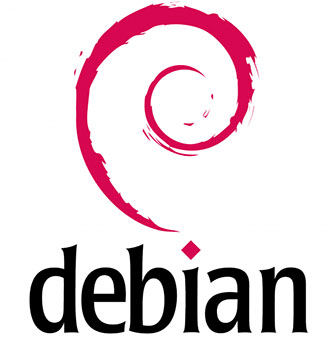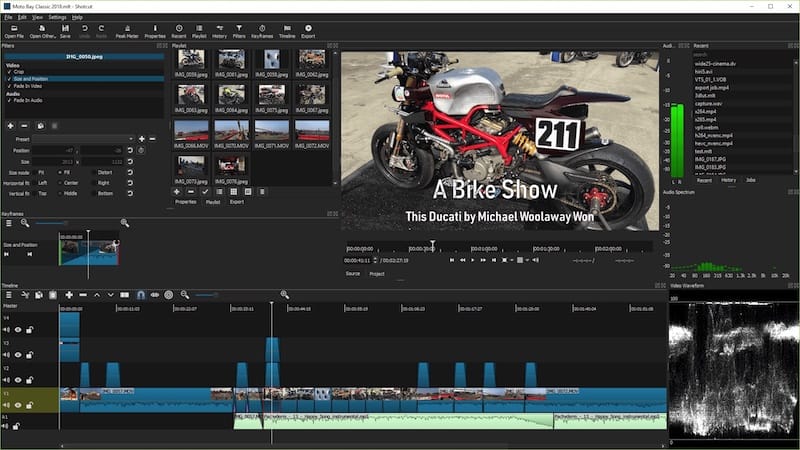How To Install Shotcut Video Editor on Debian 12

In this tutorial, we will show you how to install Shotcut Video Editor on Debian 12. Shotcut is a powerful, free, and open-source video editing application that offers professional-grade features without the price tag. For Debian 12 users looking to enhance their video editing capabilities, Shotcut provides an excellent solution with its user-friendly interface and robust functionality. This guide walks you through multiple installation methods, helping you choose the one that best fits your needs, followed by essential configuration steps to ensure optimal performance.
About Shotcut Video Editor
Shotcut has established itself as one of the leading free video editing solutions in the open-source community. Designed with versatility in mind, this cross-platform editor works seamlessly across Linux, Windows, and macOS environments.
History and Development
Shotcut was originally developed as a free video editor with the goal of providing professional-level editing capabilities to everyone. The software has evolved significantly over the years, continuously improving its feature set while maintaining its commitment to being free and open-source.
Key Features of Shotcut
Shotcut comes packed with impressive capabilities that make it suitable for both beginners and experienced video editors:
- Support for a wide range of video, audio, and image formats
- Non-destructive editing with a flexible timeline
- 4K resolution support for high-quality video production
- Multi-track timeline for complex editing projects
- Native timeline editing without requiring import
- Blackmagic Design support for input and preview monitoring
- Comprehensive filter collection for video and audio enhancement
- Cross-platform compatibility across Linux, Windows, and MacOS
System Requirements for Debian 12
To run Shotcut efficiently on Debian 12, your system should meet these basic requirements:
- 64-bit multicore processor
- 4GB RAM (8GB recommended for HD video editing)
- OpenGL 2.0 compatible graphics
- At least 1GB free disk space for the application (more needed for video projects)
Why Choose Shotcut on Debian
Shotcut integrates particularly well with Debian 12’s environment, offering stability and performance advantages. As a lightweight yet powerful editor, it provides a perfect balance between resource consumption and functionality, making it ideal for Debian users who need professional video editing capabilities without compromising system performance.
Prerequisites for Installation
Before installing Shotcut on your Debian 12 system, ensure your environment is properly prepared with these essential steps.
System Update
Always begin with updating your system repositories and packages. This ensures compatibility and reduces potential installation issues:
sudo apt update
sudo apt upgradeRequired Dependencies
Depending on your chosen installation method, you may need to install specific dependencies. For most methods, these core packages are essential:
sudo apt install libgl1-mesa-glx libpulse0 libxcb-xinerama0Backup Recommendations
As with any software installation, it’s wise to back up your important data before proceeding. While the Shotcut installation process is generally safe, having a backup provides peace of mind:
# Example command to back up your home directory
tar -czvf ~/backup-before-shotcut.tar.gz ~/important-dataChecking System Compatibility
Verify your system meets the requirements using these commands:
# Check available disk space
df -h
# Check RAM
free -h
# Check CPU information
lscpuInstallation Method 1: Using APT Package Manager
The APT package manager offers a straightforward installation process for Debian users. This method integrates well with the system and provides automatic updates through the regular system update process.
Adding PPA Repository
For the latest version of Shotcut, you may want to add a PPA repository:
sudo add-apt-repository ppa:haraldhv/shotcut
sudo apt updateInstalling via APT
Once the repository is added, install Shotcut with a simple command:
sudo apt install shotcutIf you prefer not to add the PPA, you can install directly from Debian repositories, though this may not provide the latest version:
sudo apt install shotcutVerifying Installation
After installation, verify that Shotcut has been installed correctly:
shotcut --versionThis should display the version information for your installed Shotcut application.
Advantages and Disadvantages
Advantages:
- Seamless integration with Debian’s package management system
- Automatic updates through standard system updates
- Generally more stable as packages are tested for compatibility
Disadvantages:
- May not always provide the latest version without adding a PPA
- Limited customization options during installation
Installation Method 2: Using Flatpak
Flatpak provides a universal installation method that works across different Linux distributions, including Debian 12. This method offers the advantage of always having the latest version available.
Installing Flatpak
First, install Flatpak and the GNOME Software plugin for Flatpak:
sudo apt install flatpak
sudo apt install gnome-software-plugin-flatpakAdding Flathub Repository
Add the Flathub repository, which hosts numerous applications including Shotcut:
flatpak remote-add --if-not-exists flathub https://flathub.org/repo/flathub.flatpakrepoInstalling Shotcut via Flatpak
Now install Shotcut using the following command:
sudo flatpak install flathub org.shotcut.ShotcutAfter installation, you might need to restart your system to ensure Flatpak applications are properly registered:
sudo rebootManaging Flatpak Installations
You can manage your Flatpak installations with these useful commands:
# List all installed Flatpak applications
flatpak list
# Update all Flatpak applications
flatpak update
# Remove Shotcut if needed
flatpak uninstall org.shotcut.ShotcutAdvantages and Disadvantages
Advantages:
- Always provides the latest version
- Sandboxed environment for better security
- Works consistently across different Linux distributions
Disadvantages:
- Larger installation size due to bundled dependencies
- May have limited access to system resources due to sandboxing
- Potential performance overhead compared to native installation
Installation Method 3: Using AppImage
AppImage offers a portable solution that doesn’t require installation, making it perfect for users who prefer not to modify their system or need to run multiple versions simultaneously.
Downloading AppImage
Visit the official Shotcut website (shotcut.org) and navigate to the download section. Look for the Linux AppImage option and download it to your computer.
The AppImage file will have a name similar to shotcut-linux-x86_64-XXXXXX.AppImage, where XXXXXX represents the version number.
Making AppImage Executable
After downloading, you need to make the AppImage file executable:
cd ~/Downloads
chmod +x shotcut-linux-*.AppImageRunning the AppImage
Now you can run Shotcut directly from the AppImage file:
./shotcut-linux-*.AppImageCreating Desktop Shortcut
To create a desktop shortcut for easier access, create a .desktop file:
cat > ~/.local/share/applications/shotcut.desktop << EOF
[Desktop Entry]
Name=Shotcut
Comment=Video Editor
Exec=/path/to/your/shotcut-linux-*.AppImage
Icon=shotcut
Terminal=false
Type=Application
Categories=AudioVideo;Video;AudioVideoEditing;
EOFRemember to replace /path/to/your/ with the actual path to your AppImage file.
Advantages and Disadvantages
Advantages:
- No installation required, run directly from the downloaded file
- Easy to upgrade by simply downloading a new AppImage
- Can keep multiple versions simultaneously
- Fully portable – can be used from external drives
Disadvantages:
- Doesn’t integrate with the system menu unless you create a desktop file
- Manual updates required by downloading newer versions
- May require additional dependencies for optimal performance
Installation Method 4: Using Snap
Snap packages are another universal installation method that works well on Debian 12, providing containerized applications with automatic updates.
Installing Snap on Debian
First, install the Snap package management system:
sudo apt update
sudo apt install snapd
sudo snap install coreYou might need to restart your system after installing Snap:
sudo rebootInstalling Shotcut via Snap
Once Snap is installed, installing Shotcut is straightforward:
sudo snap install shotcut --classicThe --classic flag gives Shotcut the permissions it needs to function properly.
Managing Snap Packages
Manage your Snap installations with these commands:
# List all installed Snap applications
snap list
# Update all Snap applications
snap refresh
# Remove Shotcut if needed
snap remove shotcutAdvantages and Disadvantages
Advantages:
- Automatic background updates
- Consistent experience across distributions
- Simplified dependency management
Disadvantages:
- Larger disk space requirements
- Potential startup delay compared to native installation
- Limited access to system resources due to containerization
Post-Installation Configuration
After installing Shotcut, these configuration steps will help optimize your experience and performance.
First-Launch Setup
When launching Shotcut for the first time, you’ll be greeted with the main interface. Take a moment to familiarize yourself with the layout, which includes:
- The source monitor for viewing imported clips
- The program monitor for viewing the timeline
- The timeline for assembling your video project
- Various panels for filters, properties, and media browser

Configuring Preferences
Access the preferences by navigating to Settings > Preferences. Important settings to adjust include:
Display Settings:
Settings > Preferences > Display- Choose between light and dark themes
- Set the display resolution for your monitors
Performance Settings:
Settings > Preferences > Player- Adjust the “GPU Processing” option if you have a compatible graphics card
- Set the “Realtime” option based on your system capabilities
Setting Up Project Defaults
Configure default project settings to match your typical workflow:
Settings > Preferences > Project DefaultsHere you can set:
- Default video mode (resolution and frame rate)
- Default audio settings (sample rate, channels)
- Default folder locations for projects
GPU Acceleration Setup
For improved performance, enable GPU acceleration if your hardware supports it:
Settings > Preferences > Player > GPU Processing: YesNote that not all systems support GPU acceleration. If you experience issues after enabling this option, you may need to disable it.
Troubleshooting Common Issues
Even with careful installation, you might encounter some issues. Here are solutions for the most common problems.
Installation Failures
Issue: Package conflicts during installation
Solution:
# For APT installation
sudo apt --fix-broken install
sudo apt update && sudo apt upgrade
sudo apt install shotcutIssue: Permission denied errors
Solution:
# For AppImage
chmod +x shotcut-linux-*.AppImage
# For Snap
sudo snap install shotcut --classicDependency Problems
Issue: Missing dependencies messages
Solution:
# For APT installation
sudo apt install -f
# For AppImage
sudo apt install libgl1-mesa-glx libpulse0Issue: Flatpak complaining about runtime
Solution:
flatpak update
flatpak install flathub org.freedesktop.PlatformPerformance Issues
Issue: Shotcut running slowly or lagging
Solutions:
- Lower the preview quality in Settings > Proxy
- Disable GPU processing if it’s causing issues
- Close other resource-intensive applications
Issue: Crashes when working with specific formats
Solution:
# Install additional codecs
sudo apt install ffmpegAudio/Video Problems
Issue: No audio in preview
Solution:
- Check audio settings in Settings > Audio
- Verify your system audio is working properly
Issue: Video preview appears distorted
Solution:
- Adjust video settings in Settings > Display
- Update graphics drivers
Comparison of Installation Methods
When deciding which installation method to use, consider these key factors:
Ease of Installation
- APT: Simplest method for Debian users, requiring minimal terminal knowledge
- Flatpak: Straightforward with a few additional setup steps
- AppImage: Very easy, just download and make executable
- Snap: Simple once Snap is installed on your system
Update Management
- APT: Updates through system update process
- Flatpak: Manual updates with
flatpak update - AppImage: Manual downloads of new versions required
- Snap: Automatic background updates
System Integration
- APT: Best integration with Debian environment
- Flatpak: Good integration with desktop environment
- AppImage: Minimal integration unless desktop file is created
- Snap: Good integration with automatic menu entries
Recommendation
For most Debian 12 users, the Flatpak installation offers the best balance of up-to-date software, security, and convenience. If you prefer deeper system integration, the APT method is recommended. For portable usage or testing, the AppImage method works best.
Congratulation’s! You have successfully installed Shotcut. Thanks for using this tutorial for installing the Shotcut video editor on your Debian 12 “Bookworm” system. For additional help or useful information, we recommend you check the official Shotcut website.